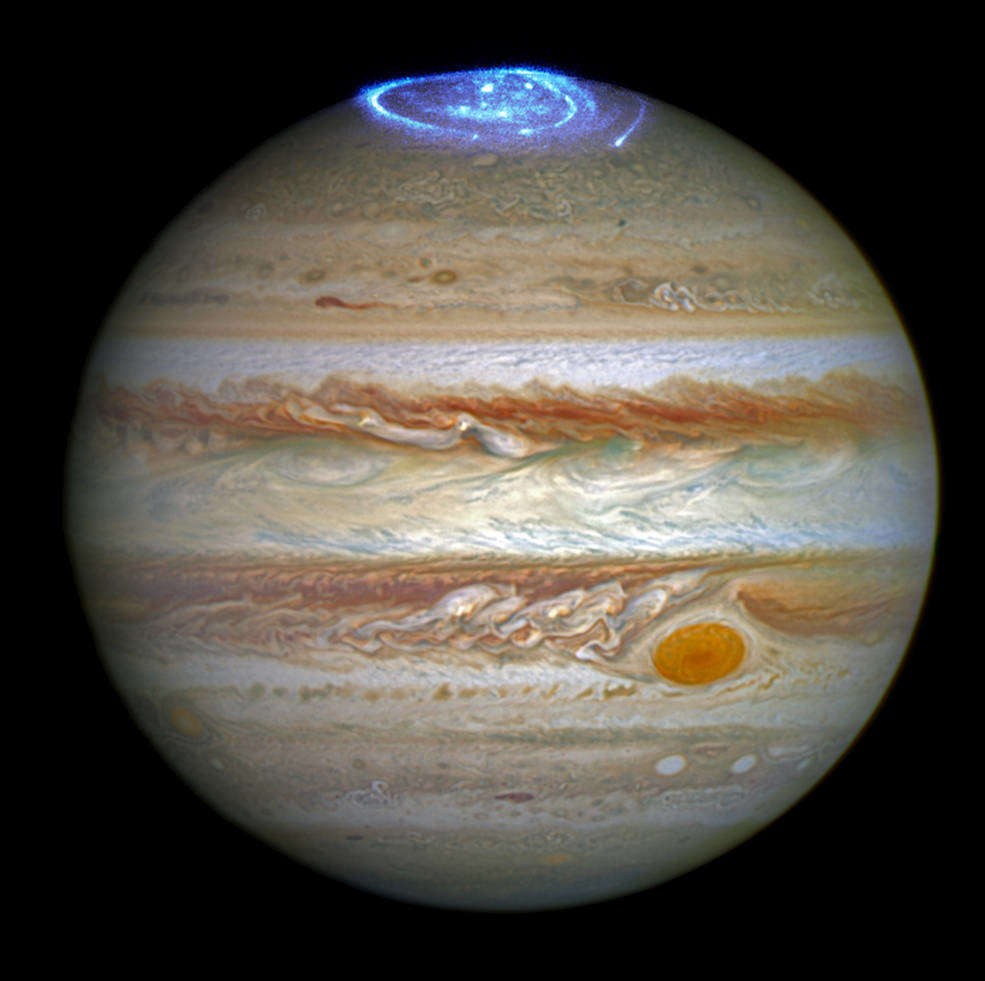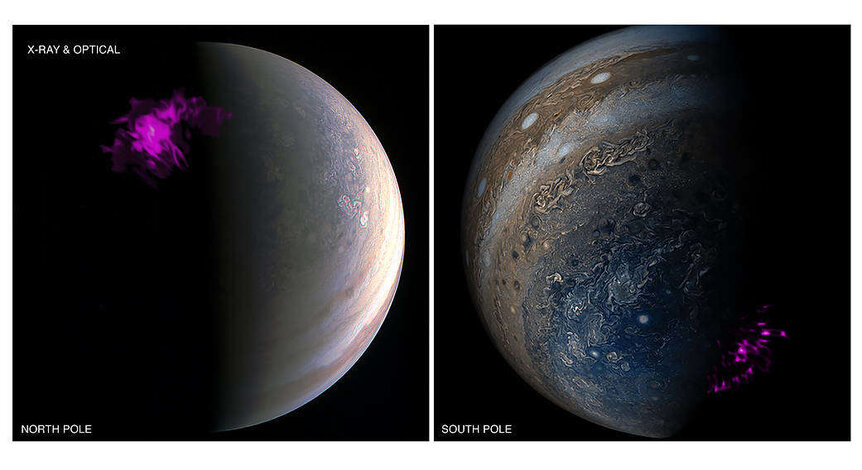Create a free profile to get unlimited access to exclusive videos, sweepstakes, and more!
Mystery of Jupiter’s auroras finally solved — and Earth has more in common with them than we thought

Jupiter lights up in a way that could rival most theme parks after dusk (not to mention Earth’s auroras) — but what is behind this sorcery? Plasma.
The fantastical X-ray flares of Jupiter’s auroras have some things in common with our own planet’s northern lights. They are both triggered by vibrating magnetic field lines, except Jupiter’s release enough energy to temporarily power all of human civilization. Unlike the Earth version of the phenomenon, Jupiter’s are also invisible to us because they only glow in X-radiation. These had something do to with the magnetic field. Now we know what.
Co-led by planetary scientists Zhonghua Yao of the Chinese Academy of Sciences and Wiliam Dunn of University College London, a team of researchers have finally called it in a study recently published in Science Advances. What was known before was that auroras occurred when ions collided with the Jovian atmosphere, and that there is plasma among its magnetic field lines. Yao found that these ions crash into the atmosphere and release ions in X-ray form when these magnetic field lines trigger waves in the plasma.
“The key question was what could periodically force ions to crash into Jupiter’s atmosphere,” Yao tells SYFY WIRE. “Then the question became: how are compressional waves and ion precipitations connected? Electromagnetic ion cyclotron waves are an ideal connection from theoretical plasma physics.”
Back up just a second. We’ll get to electromagnetic ion cyclotron waves in a moment. But first, the observations.
Yao and his team used data from Jupiter probe Juno and the XMM-Newton space observatory to figure out the science behind these almost sci-fi phenomena. XMM-Newton is one of the most advanced X-ray observatories out there. It can pick up how many X-rays are released from Jupiter’s poles fast enough to reveal the details of variations in those emissions over short periods of time. How often the X-rays pulsated was one hint that would ultimately lead to the answer. Plasma electromagnetic waves or magentohydrodynamic waves travel along the magnetic field line in tens of minutes.
“By continuing to compare the X-ray aurora pulsations with the magnetic vibrations, we’ll begin to know whether the whole of Jupiter’s magnetosphere is vibrating in time or whether this varies from place to place,” Dunn says.
Any disturbances in the magnetic field were taken into account, and the team realized that the magentohydrodynamic waves they were looking at aligned with pulses in X-rays. These were compressed magentohydrodynamic waves. They operated like compressional waves, which experience vibrations parallel to the direction they travel, and can only propagate in a medium (matter in the space between), which was plasma. The periodicities, or repeated occurrences of a phenomenon within certain periods of time, checked out in both the XMM-Newton and Juno observations. It was the evidence needed to create computer models of what was going on.
“The consistent periodicities between the compressional waves measured by Juno and the X-ray pulsations measured by XMM-Newton are the key evidence,” Yao says. “Over the 26 hours of continual observations of X-rays, there were three intervals when the two datasets were available. The consistent periodicity is extremely unlikely a coincidence.”
Surprisingly, Jupiter’s auroras are closer to Earth’s than we thought. Auroras on our own planet go through a process not unlike what happens on Jupiter. When the solar wind blows charged particles in, they also run into our magnetic field and speed towards the poles as if they were riding a cosmic roller coaster. They then smash into atmospheric molecules that become ionized by gaining or losing electrons and set off a spectacular light show. On Jupiter, auroras are more intense, as in permanent. This is because particles come from the volcanic sulfur dioxide of its constantly erupting moon Io instead of the Sun.
Now about the electromagnetic ion cyclotron (EMIC) waves that also have a connection to auroras on Earth. A cyclotron forms when an alternating electric field accelerates charged particles, which whirl around a spiral or circular pathway within the magnetic field at the same time. These waves are found in magnetized plasmas and release electromagnetic energy close to the nearest cyclotron. Yao looks forward to using this knowledge in future investigations of other planets and moons.
“Saturn, Uranus, and Neptune may all drive systematic compressional waves, modulating ion distributions, exciting electromagnetic ion cyclotron waves that could scatter ions to precipitate into planetary atmospheres," he says. "Volcanic activities are also not the only processes that can generate heavy ions. The large plumes of water vapor on Saturn’s moon Enceladus produce water group ions which are not that different from volcanic ions.”
The thing is, the ions in Jupiter’s magnetosphere are much more high-energy than those found in the magnetospheres of other bodies, so don’t expect an entire lightscapade. Other gas giants like Saturn may not even produce X-ray auroras. Still, this is a fascinating look at how special effects are created in space.
“Are Jupiter’s auroral pulses the signature of a global process or just a small localized process seen in the places Juno has explored so far? We don’t know yet,” Dunn says. “As Juno explores more and more of the environment around Jupiter, we’ll hopefully get to answer this.”



























